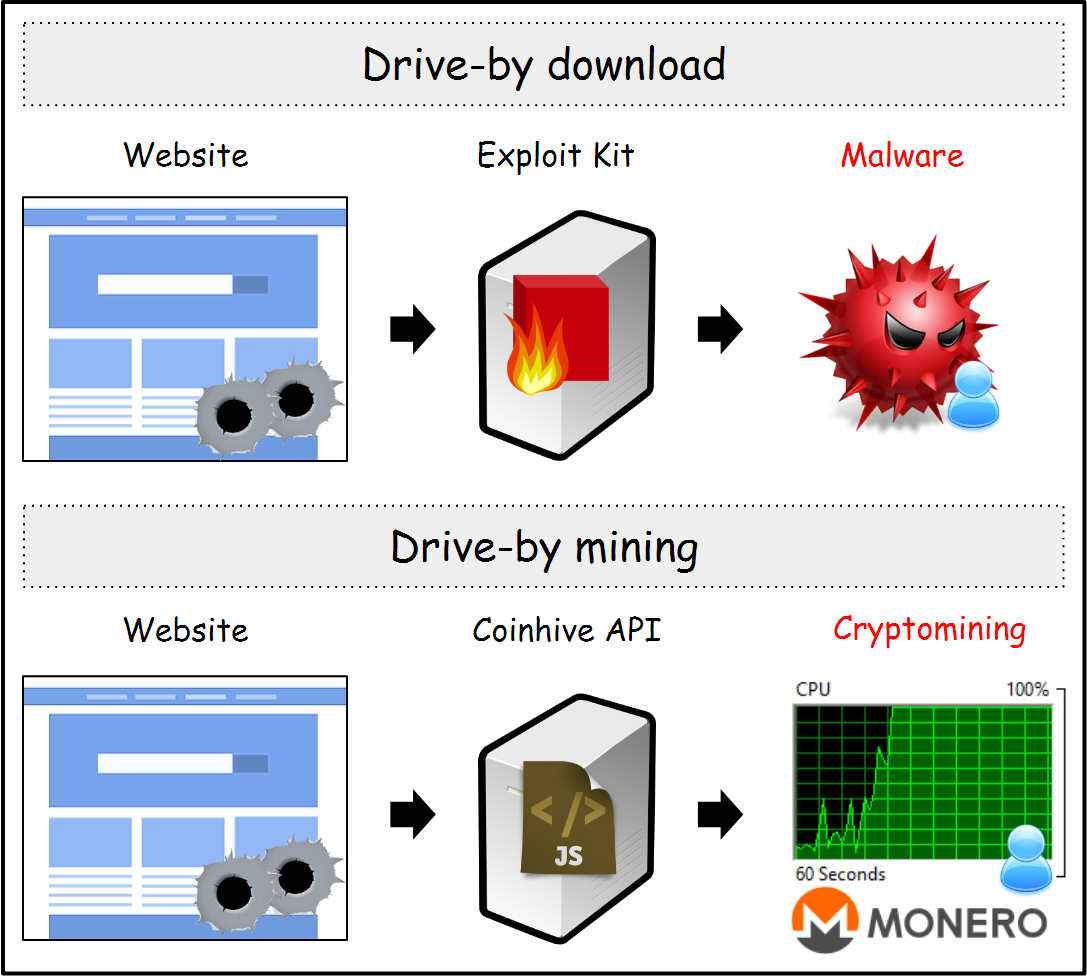An important milestone in the history of cryptomining happened around mid-September when a company called Coinhive launched a service that could mine for a digital currency known as Monero directly within a web browser.
JavaScript-based mining is cross-platform compatible and works on all modern browsers. Indeed, just about anybody visiting a particular website can start mining for digital currency with eventual profits going to the owner’s wallet (in the best case scenario). In itself, browser-based cryptomining is not illegal and could be seen as a viable business model to replace traditional ad banners.
To differentiate browser-based mining from other forms of mining, many started to label these instances as JavaScript miners or browser miners. The simplicity of the Coinhive API integration was one of the reasons for its immediate success, but due to several oversights, the technology was almost instantly abused.
However, many web portals started to run the Coinhive API in non-throttled mode, resulting in cases of browser-based mining utilizing 100 percent of the victims’ CPU to mine for cryptocurrency with no knowledge or consent given by the user.
We decided to call this new phenomenon drive-by cryptomining, or drive-by mining for short, due to the way the code is delivered onto unsuspecting users, very much like drive-by downloads. There’s one important caveat, though: There is no malware infection at the end of the chain.

While the harm may seem minimal, this is not the kind of web experience most people would sign up for. To make matters worse, one does not always know if they are mining for the website owner or for criminal gangs that have found a new monetization tool for the hacked sites they control.
In our full report, A look into the global drive-by cryptocurrency mining phenomenon, we review the events that led to this new technology being abused and explore where users involved in cryptomining against their will are located.

To give you an idea of the scope of drive-by mining, Malwarebytes has been blocking the original Coinhive API and related proxies an average of 8 million times per day, which added up to approximately 248 million blocks in a single month.
With their new mandatory opt-in API, Coinhive hopes to restore some legitimacy to the technology and, more importantly, push it as a legal means for site owners to earn revenues without having to worry about ad blockers or blacklists. This could also benefit users who might not mind trading some CPU resources for an ad-free online experience.
Time will tell how criminals react, but in the meantime, drive-by mining continues unabated.
For more information on this latest trend in the cryptocurrency world, please download our report.









